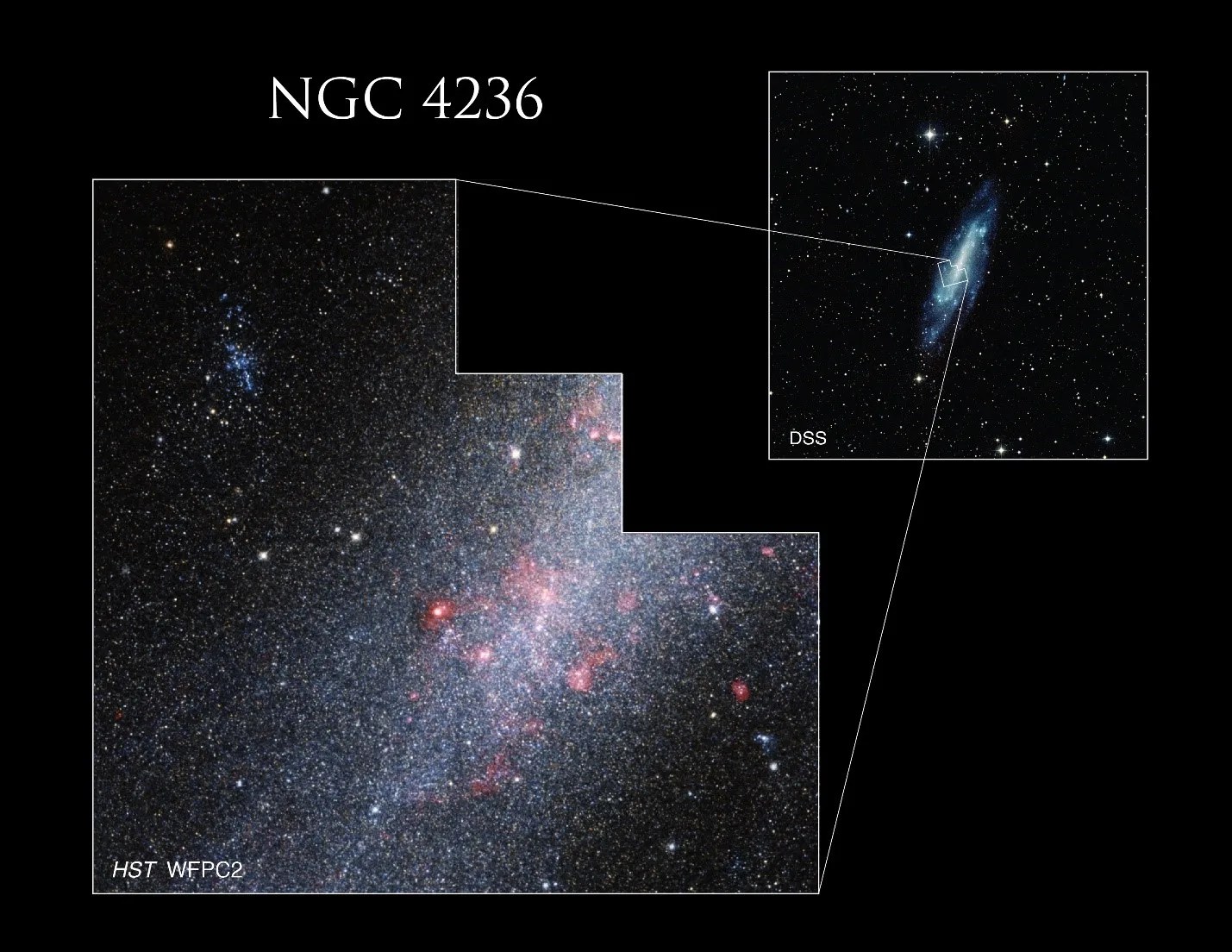Caldwell 3
This barred spiral galaxy was first spotted by British astronomer William Herschel in April 1793 in the constellation Draco.
Distance
11.7 million light-years
Apparent Magnitude
9.6
constellation
Draco
object type
Barred Spiral Galaxy

Located just north of the Big Dipper, Caldwell 3 is one of at least 34 gravitationally bound galaxies in the Ursa Major galaxy group. This barred spiral galaxy, also known as NGC 4236, sits 11.7 million light-years from Earth in the constellation Draco and has an apparent magnitude of 9.6. Although faint, Caldwell 3 can be spotted using a small telescope from a dark-sky site. However, the best views are through large telescopes, which show the galaxy as a large, diffuse glow that’s brighter toward the center. It appears highest during the spring in the Northern Hemisphere. It can also be seen from northern latitudes of the Southern Hemisphere in autumn, albeit with a bit more difficulty as it will appear low in the sky. The galaxy was first spotted by British astronomer William Herschel in April 1793.

Barred spiral galaxies are named for the elongated lane of stars that cut through their centers. Not only do these bars often make their galaxies easier to pick out in the night sky due to their needle-like structure, but they can also have profound effects on the dynamics of the galaxies. Bars are thought to direct gas from the spiral arms toward the center of the galaxy, fueling stellar birth. These structures seem to be common in spiral galaxies. Of those that we have observed, nearly two-thirds of spiral galaxies contain a bar, including our Milky Way.
This stunning Hubble image captures a portion of Caldwell 3 and its central bar. It is a composite of four Wide Field and Planetary Camera 2 observations in visible, infrared, and ultraviolet light. These images were taken in order to constrain the distance of the galaxy from Earth. Using the observable characteristics of some of the brightest stars in Caldwell 3, researchers hoped to determine if it was an isolated galaxy or if it was associated with a group.

Glossary
Apparent Magnitude - The brightness of an astronomical object as seen from Earth, influenced by the object's distance from Earth, its absolute magnitude, and even gas and dust that lie between the object and Earth.
Spiral Galaxy - A galaxy characterized by its spiral structure, with star-filled arms that extend out from the center of the galaxy and host regions of star formation.
Explore Hubble's Caldwell Catalog
The following pages contain some of Hubble’s best images of Caldwell objects.

Caldwell 1
Also known as NGC 188, this group of stars formed from a large cloud of gas making the stars roughly…

Caldwell 2
This shell of gas is expanding outward, away from the dying star within.




